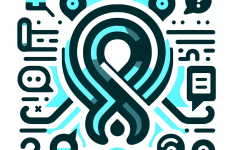Customer Participation in Agile Development
Agile development is characterized by its iterative and incremental nature, which allows for frequent feedback and adjustments throughout the project lifecycle. One of the core principles of agile is customer collaboration over contract negotiation. This means that customers are actively involved in the development process, providing feedback at each iteration and helping to shape the product as it evolves. This continuous engagement ensures that the final product closely aligns with the customer’s needs and expectations, reducing the risk of misunderstandings or misaligned objectives.
The benefits of customer participation in agile development are manifold. Firstly, it fosters a sense of ownership and commitment from the customer, as they feel directly involved in the creation of the product. This can lead to higher levels of satisfaction and a stronger partnership between the development team and the customer. Secondly, the iterative nature of agile allows for early detection and correction of issues. By regularly reviewing the product, customers can identify potential problems before they become significant, saving time and resources in the long run.
However, customer participation in agile development is not without its challenges. It requires a significant time commitment from the customer, who must be available for regular meetings, reviews, and feedback sessions. Additionally, not all customers may be comfortable with the level of involvement required, or they may lack the technical expertise to provide meaningful feedback. Despite these challenges, the benefits of customer participation in agile development often outweigh the drawbacks, leading to more successful and customer-centric projects.
Requirement Documents in Traditional Development
In contrast to agile development, traditional development methodologies, such as the Waterfall model, place a heavy emphasis on detailed requirement documents at the beginning of the project. These documents serve as a blueprint for the entire development process, outlining the scope, objectives, and specifications of the project. The assumption is that once the requirements are documented and approved, the development team can proceed with minimal need for further customer involvement until the final product is delivered.
The use of requirement documents in traditional development offers several advantages. Firstly, it provides a clear and structured roadmap for the development team, reducing ambiguity and ensuring that everyone is on the same page. This can be particularly beneficial for large, complex projects that require precise planning and coordination. Secondly, requirement documents can serve as a legal or contractual agreement between the customer and the development team, providing a basis for accountability and dispute resolution if issues arise during the project.
However, the reliance on requirement documents in traditional development also has its limitations. One major drawback is the potential for inflexibility. Once the requirements are documented and approved, making changes can be difficult and costly, as it may require revisiting and reapproving the entire document. Additionally, requirement documents are often based on the customer’s initial understanding of their needs, which may evolve over time. This can lead to a final product that no longer meets the customer’s current requirements, resulting in dissatisfaction and the need for costly revisions.
Agile vs. Traditional: A Comparative Analysis
When comparing agile development and traditional development, it becomes clear that each approach has its strengths and weaknesses, particularly in terms of customer participation and requirement documentation. Agile development’s emphasis on continuous customer involvement allows for greater flexibility and adaptability, ensuring that the final product meets the customer’s evolving needs. This iterative approach also fosters a collaborative relationship between the development team and the customer, leading to higher levels of satisfaction and project success.
On the other hand, traditional development’s reliance on detailed requirement documents provides a structured and predictable framework for the project, which can be advantageous for large, complex projects that require precise planning. However, this approach can also lead to inflexibility and a disconnect between the final product and the customer’s current needs. The lack of ongoing customer involvement in traditional development can result in a product that, while technically sound, fails to fully meet the customer’s expectations.

Ultimately, the choice between agile and traditional development depends on the specific needs and constraints of the project. For projects where customer needs are likely to evolve, or where rapid delivery is essential, agile development offers a more effective approach. However, for projects that require a high degree of predictability and control, traditional development may be more appropriate. It is important for project managers to carefully consider these factors when selecting a development methodology.
Conclusion
In conclusion, the debate between agile development and traditional development often centers on the role of customer participation and requirement documentation. Agile development’s iterative and customer-centric approach offers significant advantages in terms of flexibility, adaptability, and customer satisfaction. By involving customers throughout the development process, agile ensures that the final product closely aligns with their needs and expectations. While this approach requires a greater commitment from the customer, the benefits often outweigh the challenges, leading to more successful projects.
Traditional development, with its reliance on detailed requirement documents, provides a structured and predictable framework that can be beneficial for large, complex projects. However, this approach can also lead to inflexibility and a disconnect between the final product and the customer’s current needs. The lack of ongoing customer involvement in traditional development can result in a product that, while technically sound, fails to fully meet the customer’s expectations.
Ultimately, the choice between agile and traditional development should be guided by the specific needs and constraints of the project. Both approaches have their merits, and project managers must carefully consider the trade-offs when selecting a development methodology. By understanding the strengths and weaknesses of each approach, project managers can make informed decisions that lead to successful and customer-centric projects.
FAQ
Q1: What is the main difference between agile development and traditional development in terms of customer participation?
A1: The main difference lies in the level and timing of customer involvement. Agile development emphasizes continuous customer participation throughout the project, with regular feedback and adjustments. In contrast, traditional development typically involves customer participation primarily at the beginning and end of the project, with a focus on detailed requirement documents at the outset.
Q2: Can traditional development be adapted to include more customer participation?
A2: While traditional development methodologies like Waterfall are inherently less flexible, it is possible to incorporate some elements of customer participation. For example, periodic reviews or milestone check-ins can provide opportunities for customer feedback. However, this approach may not achieve the same level of flexibility and adaptability as agile development.
Q3: How does agile development handle changes in customer requirements?
A3: Agile development is designed to handle changes in customer requirements effectively. The iterative nature of agile allows for frequent reassessment and adjustment of the project scope based on customer feedback. This flexibility ensures that the final product remains aligned with the customer’s evolving needs, even if those needs change during the development process.
ARTICLE TITLE :Customer participation in agile development vs. requirement documents in traditional development ,AUTHOR :ITpmlib

















